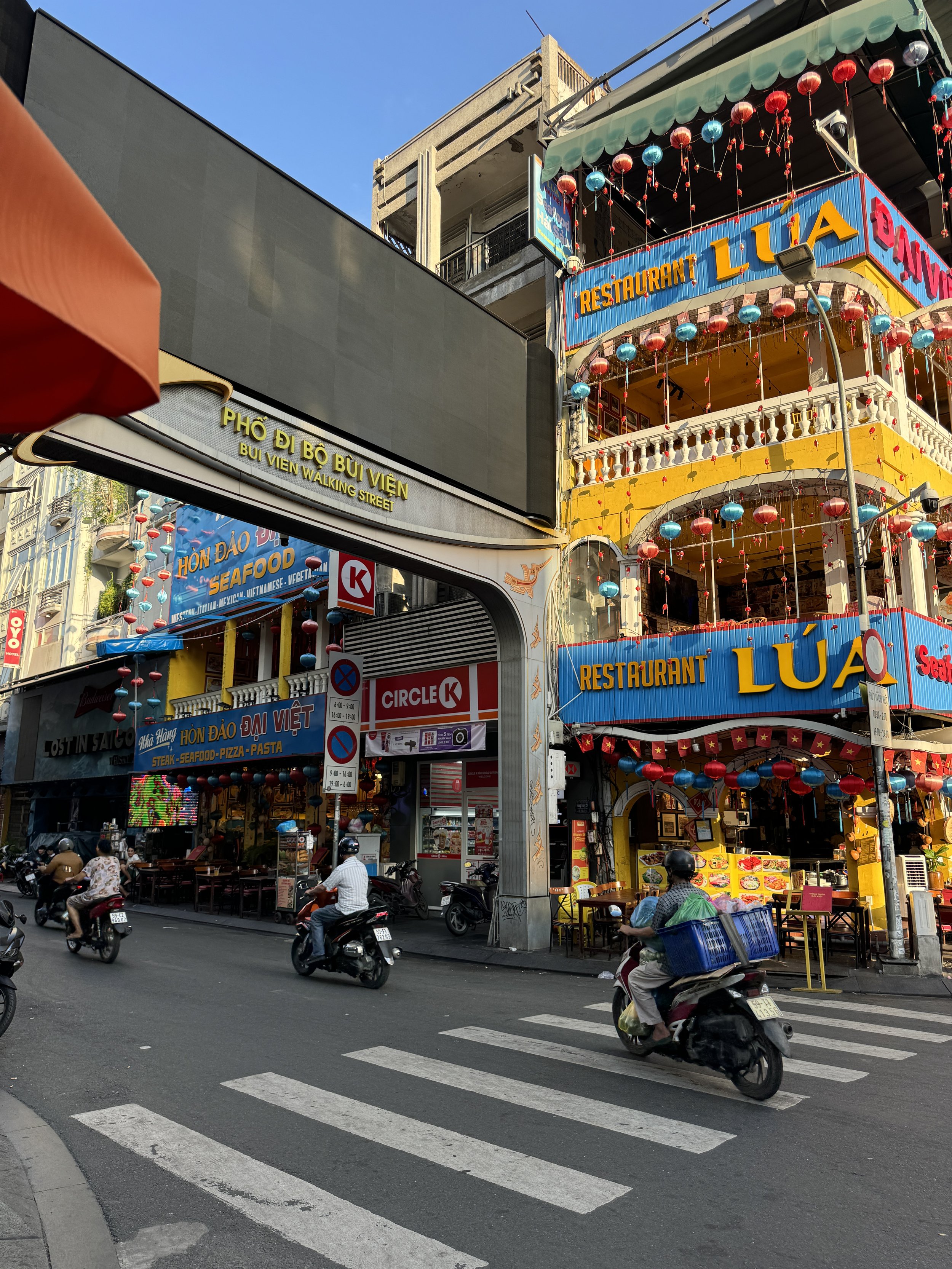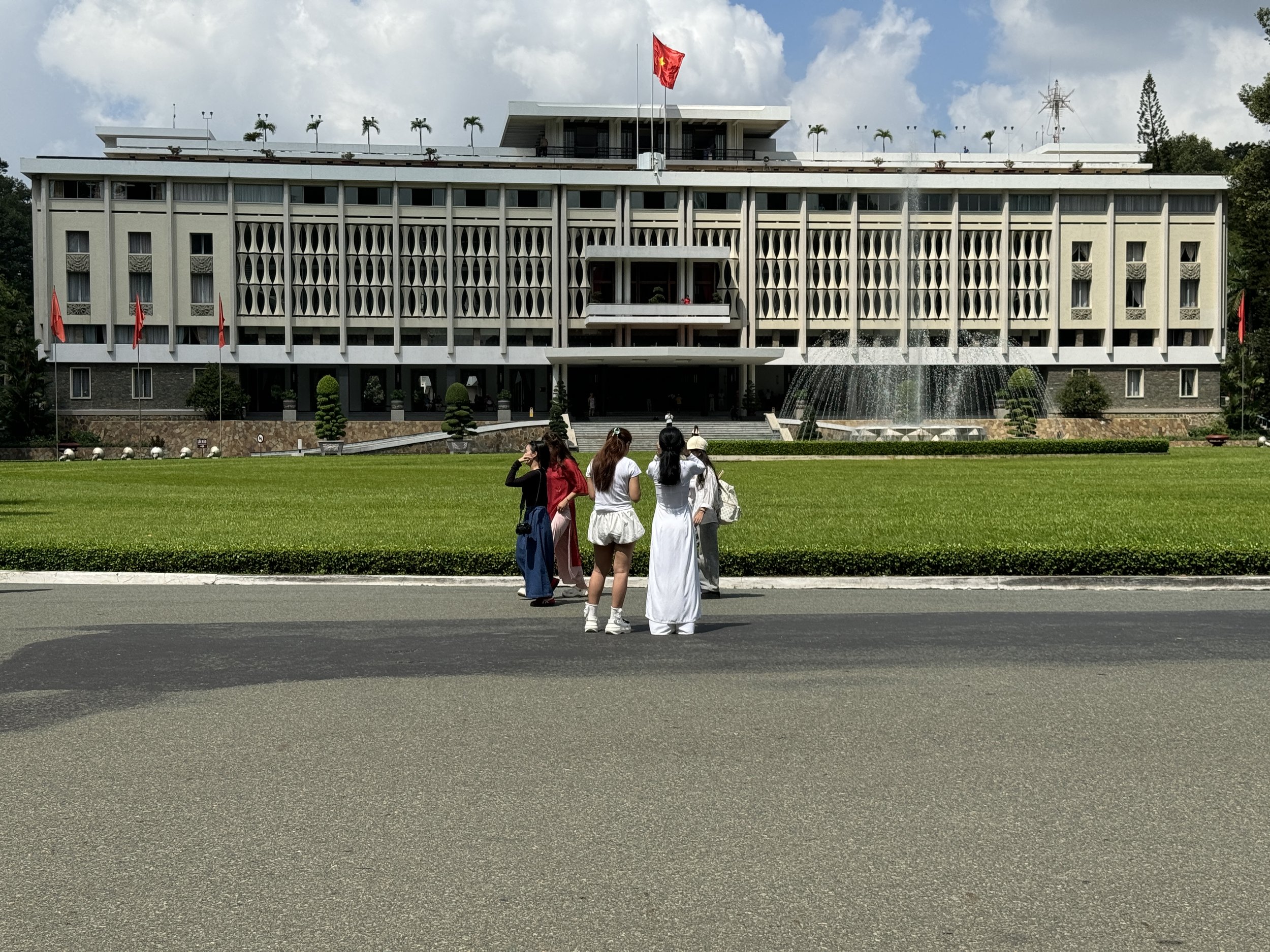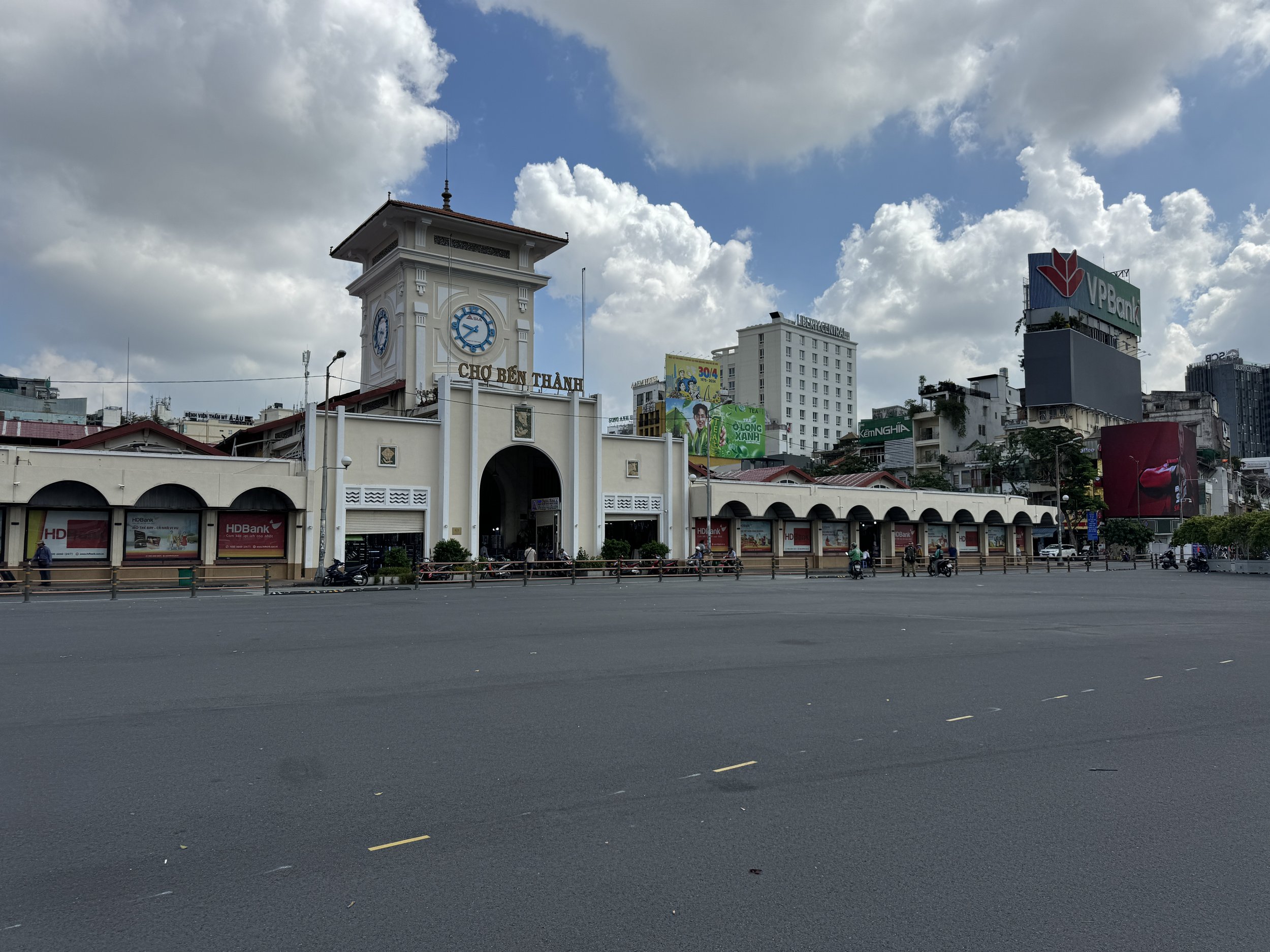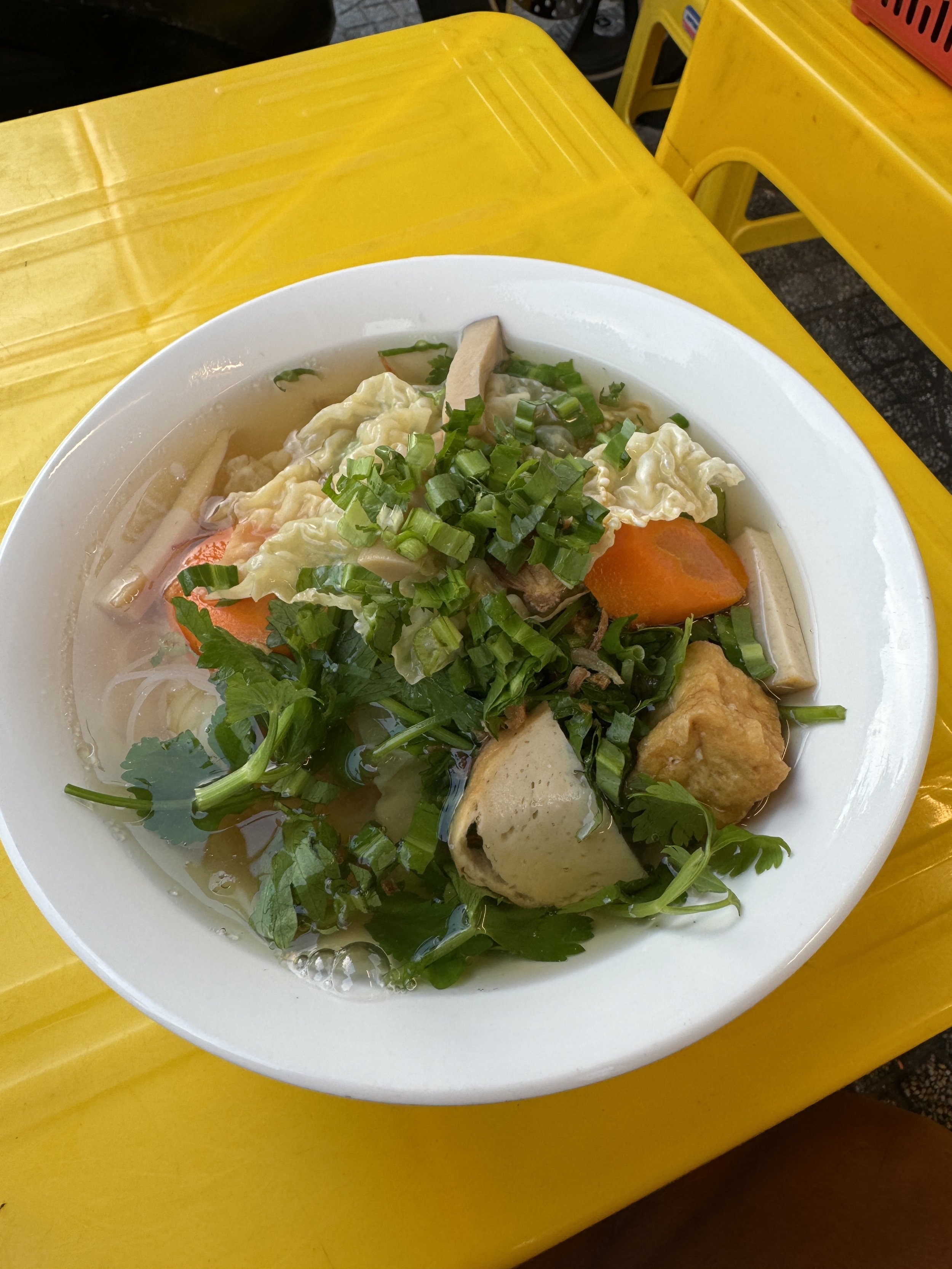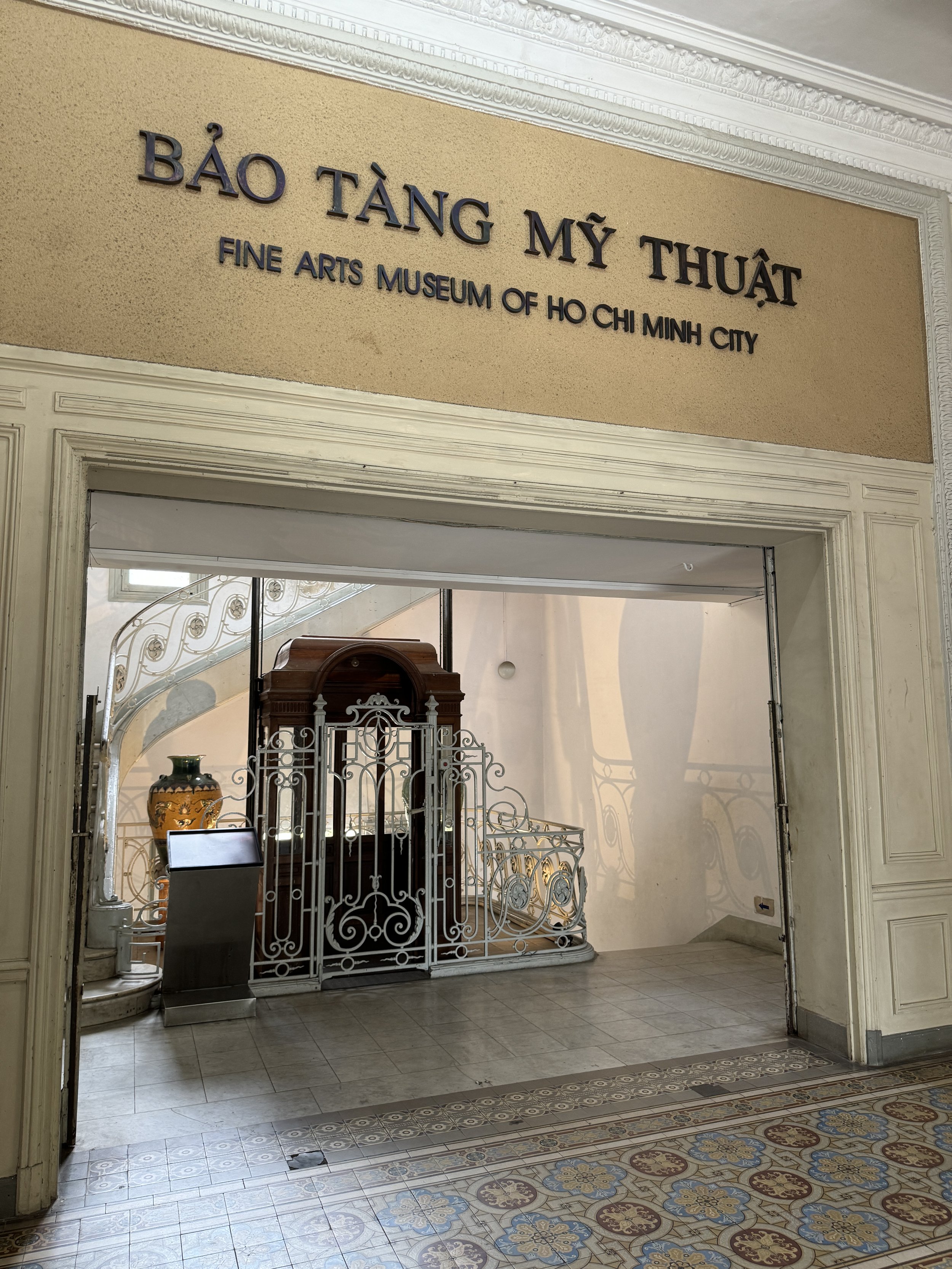Posted August 22
Ho Chi Minh City
It’s huge. It’s busy. It’s hot. It’s humid. It dances the line between rich and poor, developed and underdeveloped, and shows the strains of its past and its present.
For all its history and tradition, it also presents itself with youthful energy and vigor. Like many parts of Vietnam the Gen Z and Millennials are at the forefront and seem to be leading the way.
The dichotomies of old and new, tradition and avant-garde, young and old, growth and stagnation, capitalism and communism are more apparent here than anywhere else I’ve experienced in Vietnam.
The Saigon River cutting through Ho Chi Minh City
A city of about 10 million people, the largest in Vietnam, the city previously known as Saigon has had permanent settlers from at least the second century CE.
That brings up an often confusing discussion about place names and demonyms. Most westerners think of Ho Chi Minh City as replacing the city name Saigon (or Sai Gon) at the end of War of Liberation. Saigon itself was a product of French Colonialism, and prior to French occupation the city was called Gia Dinh. Either way, the demonym of the residents remains Saigonese.
The area, like so much of SE Asia has been under the control of many parties over the years, from Chinese to Cham and Khmer. That’s even before the modern occupation by the French and Japanese.
Old and new
Like many huge cities, it’s hard to talk about Ho Chi Minh City in broad terms. Similar to New York and its Burroughs, Ho Chi Minh City is split into enumerated districts, all of which seem to have their own personality. District 1 is the center of tourist activities, with the Independence Palace, Ben Thanh Market, Post Office and Notre Dame.
It also is home to the infamous Bui Vien walking street, where the western tourists (and locals too, to be fair) gather in the evening for cheap beer and overpriced food. The gaudy bars line the street and have minions promising a good time to be had through 2 for 1 drink deals and music loud enough to be heard several blocks away.
Bui Vien Walking Street
Independence Palace, the former residence of the President of South Vietnam
Bên Thanh Market, home to a sprawling array of goods for sale
Farther out, District 4 seems to be a bit more rugged and, dare I say, “gritty.” It has a misguided reputation for being a dangerous, crime infested urban jungle. My observation from walking through did not confirm that reputation. It is home to many small restaurants and markets and because there’s not a lot of tourists who wander the half a kilometer from District 1, it is an immersive experience.
District 5 is famous for a geographically large Chinatown. Like in so many cities around the world, Chinese immigrants tended to gather together and live in a central area. This was sometimes by choice, but more often due to force. District 5 has Binh Tay Market as its commercial center, a fascinating place to walk and just take in the huge variety of things for sale.
Freshly butchered meat? Yes. Cheap plastic toys? Yes. Rubber bands and office supplies? Sure. The list just goes on and on.
Tue Thanh Pagoda, District 5
Of course, it’s hard to describe any visit to Ho Chi Minh City without a talk about the food. As the city has become richer, it has also become much more international. Huge multinational corporations like Lotte and McDonalds have grabbed hold here.
Small street carts and restaurants are certainly alive as well, but throughout the various districts of Ho Chi Minh City, not just District 1, you will find numerous examples of corporate imperialism.
That said, it was a joyful start to the day to walk a block or two from my hotel and get a freshly made bowl of noodles or a Banh Mi made on bread taken out of the oven just a few minutes earlier.
The variety of foods offered is truly dazzling, and the ability to eat on the street and just watch the entertaining daily life go by is fun.
Bo Kho, a beef soup/stew served with noodles, baguette, and fresh herbs
Hủ tiếu, a noodle soup with clear pork broth.
Bun Thai, a soup reminiscent of Tom Yum flavor.
Visiting Ho Chi Minh City is a great adventure and a highlight of my SE Asia tour. Its size can be daunting, but overall the people are friendly and the city is genuinely interesting to explore.
Ho Chi Minh City has a Fine Arts Museum dedicated to Vietnamese Artists and Art.


